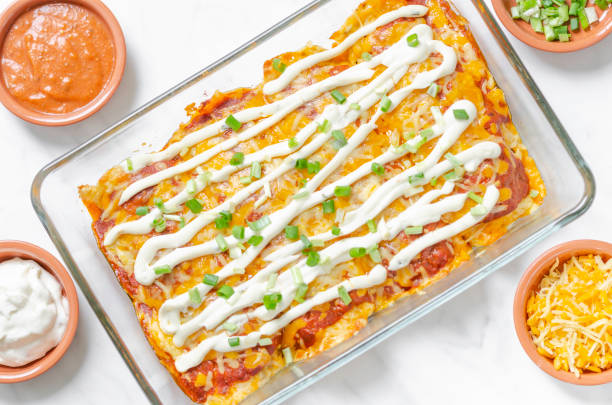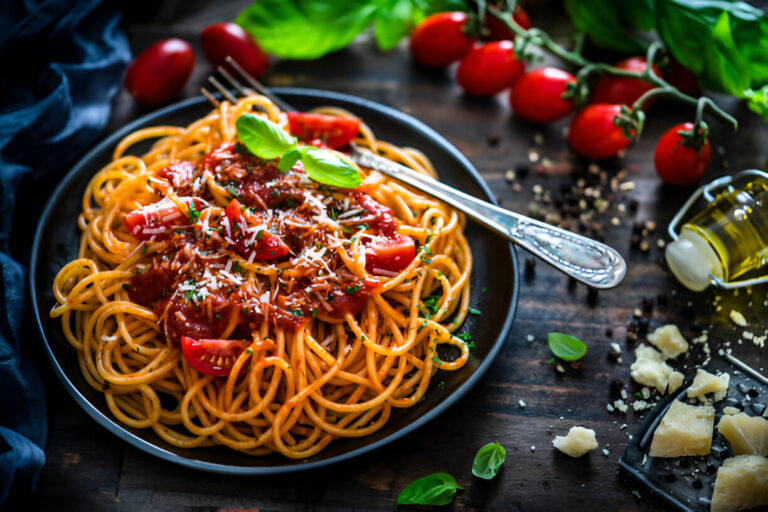Delicious Pasta Carbonara: Recipe, History, and Best Tips
Pasta Carbonara is a timeless classic that captures the essence of Italian cuisine with its rich flavors and simple, high-quality ingredients. This comforting dish, traditionally made with spaghetti, guanciale, eggs, and Pecorino Romano cheese, has gained worldwide acclaim for its creamy texture and savory taste. The beauty of Pasta Carbonara lies not only in its deliciousness but also in its reliance on essential ingredients that harmonize perfectly, creating a symphony of flavors with minimal fuss.
As one of the cornerstones of Roman cuisine, Pasta Carbonara holds a significant place in Italy’s culinary heritage. It exemplifies the principles of Italian cooking, celebrating the use of fresh, local ingredients and time-honored techniques. Understanding how this iconic dish came to be — from its mysterious origins to its role in the lives of Italian families — further enriches the experience of savoring each delectable bite. Whether enjoyed at a bustling trattoria in Rome or cooked at home with loved ones, Pasta Carbonara invites everyone to embrace the joy of Italian cooking.
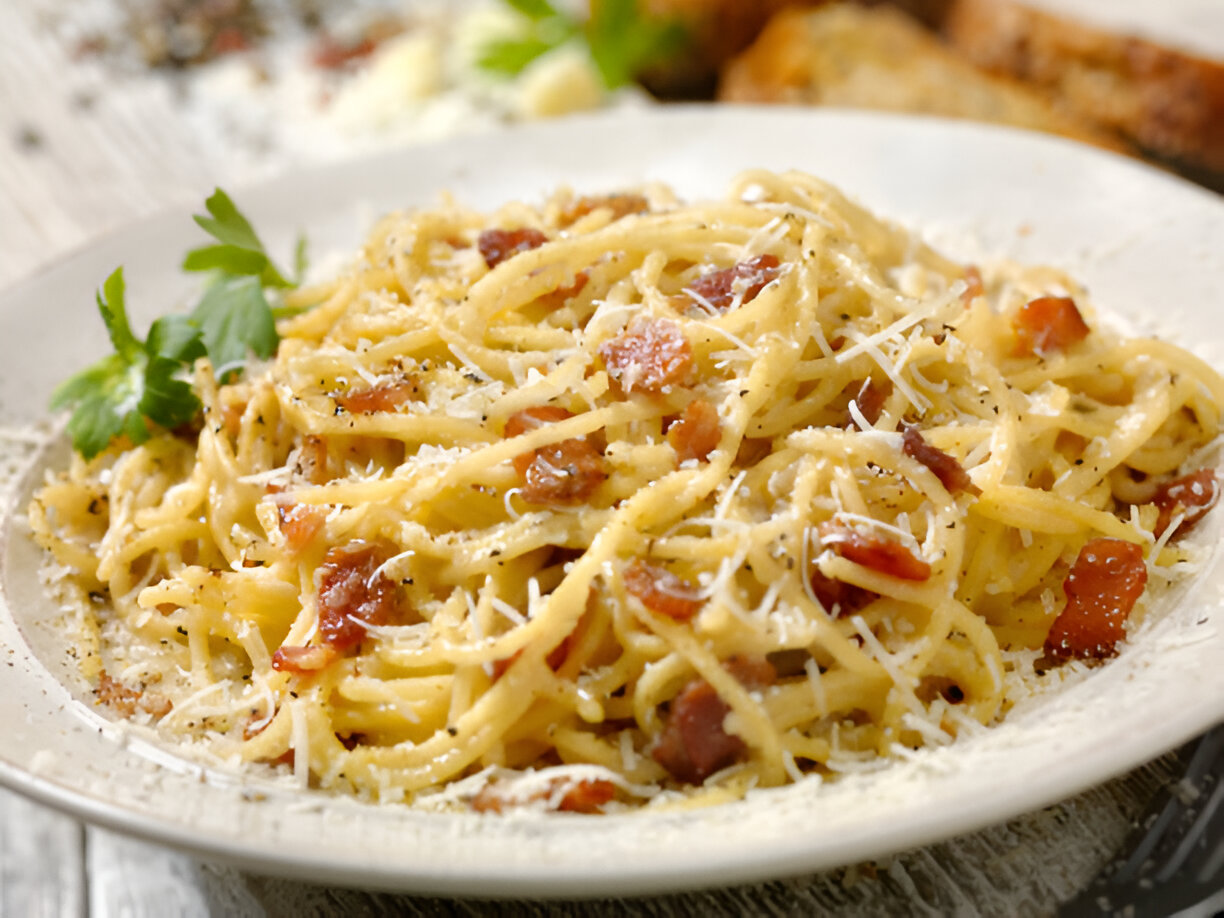
History of Pasta Carbonara
The origins of Pasta Carbonara are shrouded in mystery, with various theories attempting to explain how this beloved dish came into being. One popular theory suggests that it was created by Italian coal miners, known as “carbonari,” who would prepare the dish with ingredients that were easy to transport and cook over an open flame. Another theory links the dish to American soldiers stationed in Italy during World War II, who combined their rations of eggs and bacon with the local pasta to create a new dish. There are also those who believe that it stems from traditional Roman recipes that featured similar ingredients, reflecting the simplicity and resourcefulness of Italian cooking.
The dish is famously associated with the Lazio region, particularly Rome, where it has become a staple of local cuisine. While various regions have their own interpretations, the fundamental flavors and ingredients remain constant across Italy. This deep-rooted connection to Italian culture not only makes Pasta Carbonara a popular dish but also a source of pride among those from Rome and the surrounding areas.
Historical Context
Pasta Carbonara holds a significant place in Italian culinary history, representing the essence of Italian cooking: simple ingredients transformed into something extraordinary. The dish became widely recognized post-World War II as American servicemen returning home carried the flavors of Italy and adapted them into their homes. Furthermore, the dish emphasizes the economic reality of Italy during the mid-20th century, where wholesome, affordable ingredients were vital. It showcases the ingenuity of people who made the most of what they had, turning them into a celebrated dish that would travel far beyond its humble beginnings.
As Pasta Carbonara evolved over decades, it simultaneously became a cherished family recipe and a popular menu item in trattorias, forming part of Italy’s rich culinary tapestry. Its enduring popularity today can be attributed to its comforting flavors, making it a beloved choice not only in Italy but all around the world. Enjoying Pasta Carbonara is more than just indulging in a meal; it’s also about connecting with a tradition that binds generations together, reflecting the warmth of Italian culture and hospitality.
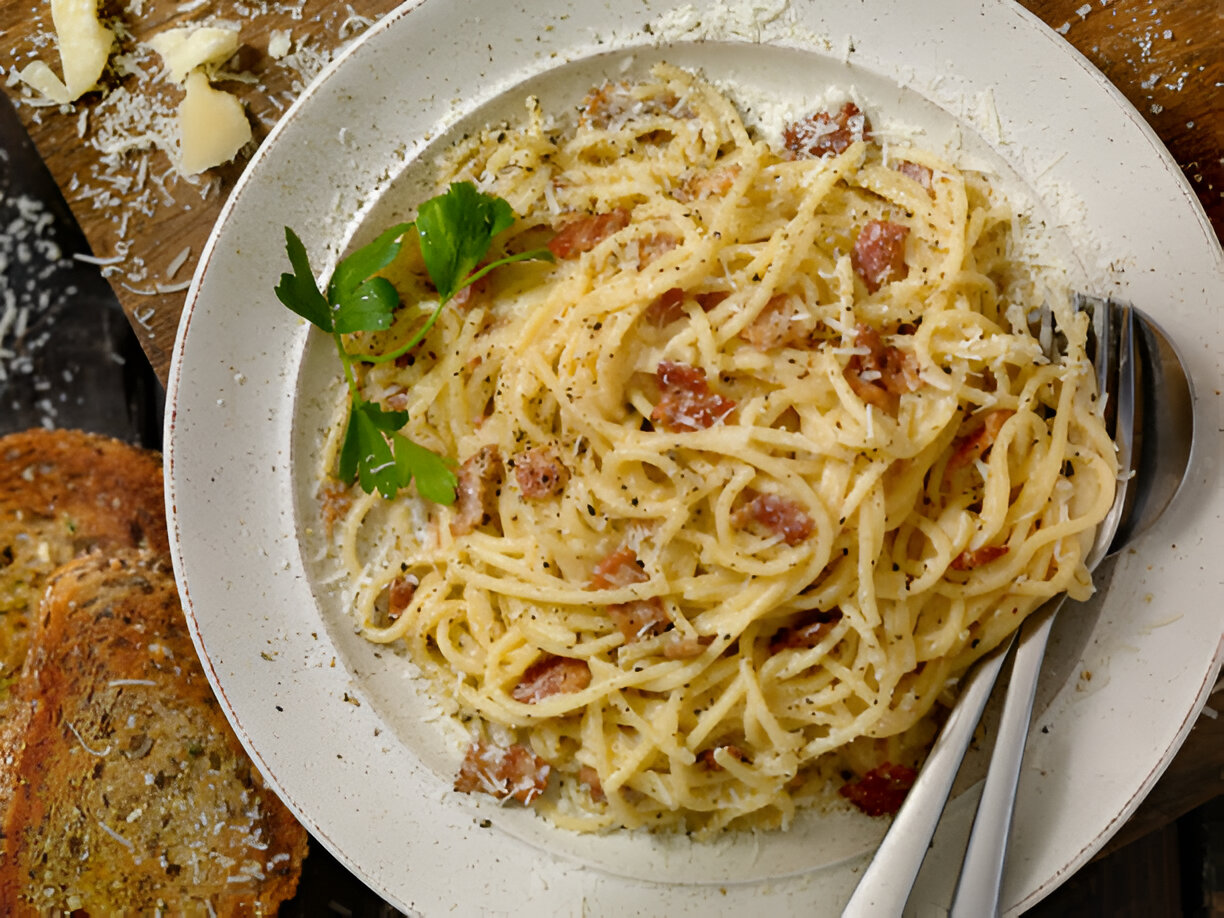
Understanding the Ingredients
To truly appreciate Pasta Carbonara, it’s essential to understand the quality and significance of its primary ingredients. Each component plays a crucial role in creating the dish’s iconic flavor and texture.
Primary Ingredients
- Pasta: The most commonly used type of pasta for Carbonara is spaghetti, although fettuccine, linguine, or bucatini can also be delicious alternatives. The choice of pasta affects the overall experience, as the shape influences how the sauce clings to it.
- Guanciale: This traditional Italian cured meat, made from pork cheeks or jowls, is pivotal for authentic flavor. Guanciale adds a subtle richness and depth that is unmatched by other types of bacon or pork. If guanciale is not available, pancetta may be used, but the resulting dish will differ slightly in taste.
- Eggs: Eggs are the heart of the creamy sauce in Carbonara. Their velvety texture creates a luxurious coating for the pasta. It is important to use fresh eggs to ensure the best flavor and safety.
- Cheese: The most traditional cheese used in Carbonara is Pecorino Romano, which contributes a sharp, salty flavor. However, some recipes may incorporate Parmigiano-Reggiano for added complexity. Using freshly grated cheese enhances both texture and taste.
- Black Pepper: Freshly cracked black pepper is essential for seasoning and adds a subtle heat that balances the richness of the dish. It should be used generously to elevate the flavors.
Quality vs. Quantity
Choosing high-quality ingredients is vital for the authenticity and flavor of Pasta Carbonara. Opting for artisanal pasta, a good quality guanciale, fresh eggs from local farms, and authentic Italian cheese will make a noticeable difference in the dish’s overall taste. When making pasta, the quality of the ingredients used contributes significantly to the final experience, so investing in them is a worthwhile endeavor.
The Perfect Pasta Carbonara Recipe
Ingredients List
- Pasta: 400g spaghetti
- Guanciale: 150g, diced
- Eggs: 4 large eggs
- Pecorino Romano: 100g, grated
- Black Pepper: Freshly ground, to taste
- Salt: For pasta water
Directions
- In a large pot, bring salted water to a boil and cook the spaghetti according to the package instructions until al dente.
- Meanwhile, in a skillet over medium heat, cook the diced guanciale until crispy and golden brown, rendering out the fat. Remove from heat and set aside.
- In a bowl, whisk together the eggs and grated Pecorino Romano cheese until well combined. Add freshly ground black pepper to taste.
- Once the pasta is cooked, reserve a cup of pasta water, then drain the pasta. Immediately combine the hot pasta with the guanciale in the skillet, allowing the heat to continue to render flavors.
- Remove the skillet from the heat and quickly add the egg and cheese mixture, stirring rapidly to create a creamy sauce. If necessary, add reserved pasta water a little at a time to achieve the desired consistency.
- Serve immediately, garnished with additional grated cheese and freshly cracked black pepper.
Cooking Tips and Advice
Timing is key when combining the egg mixture with the hot pasta. The residual heat from the pasta must cook the eggs gently to form a creamy consistency without scrambling them. For those with dietary restrictions, you can easily adjust this recipe by substituting guanciale with sautéed mushrooms or roasted vegetables for a vegetarian version, ensuring that the essence of Carbonara is preserved in a new way.
Common Mistakes to Avoid
- Overcooking the pasta: Ensure the pasta is cooked al dente to create the perfect texture.
- Using cream: Authentic Carbonara does not contain cream; the creaminess comes solely from the eggs and cheese.
- Choosing the wrong type of cheese: Stick to Pecorino Romano for an authentic flavor; avoid pre-grated varieties.
- Not using freshly cracked black pepper: Freshly cracked pepper enhances the flavor significantly; avoid pre-ground options.
Variations of Pasta Carbonara
Classic Italian Variations
While the traditional recipe holds a special place in Italian cuisine, various regions in Italy boast their interpretations of Carbonara. For instance, some may incorporate ingredients like onions or garlic for added sweetness and depth, while others may replace guanciale with local cured meats.
Modern Twists
As culinary creativity evolves, several modern adaptations of Pasta Carbonara have emerged:
- Vegetarian options: Substitute guanciale with sautéed mushrooms, zucchini, or eggplant to create a satisfying vegetarian dish.
- Seafood Carbonara: Incorporates ingredients like shrimp or scallops, adding a delightful seafood twist to the classic recipe.
- Gluten-free pasta alternatives: For those with gluten sensitivities, several brands offer gluten-free pasta options that pair beautifully with the traditional sauce.
Pasta Carbonara: Nutritional Information
Understanding the nutritional aspects of Pasta Carbonara can enhance your dining experience. Below is a general breakdown:
- Calories: Approximately 600-800 calories per serving, depending on portion size and ingredient specifics.
- Protein: A rich source of protein mainly from eggs and guanciale.
- Carbohydrates: Primarily from the pasta, providing a substantial energy source.
- Fats: The dish is higher in fats, especially from guanciale and cheese; moderation is encouraged.
When indulging in Pasta Carbonara, it’s essential to balance it with a variety of other nutritious foods in your diet.
Wine Pairings for Pasta Carbonara
Suitable Red and White Wines
Choosing the right wine to accompany Pasta Carbonara can elevate the dining experience. Here are some recommendations:
- Red Wines: A light-bodied Chianti or Pinot Noir complements the rich flavors of Carbonara without overpowering it.
- White Wines: A crisp Pinot Grigio or a lightly oaked Chardonnay pairs nicely, enhancing the dish’s creaminess.
When pairing wine with Italian dishes like Pasta Carbonara, aim to find a balance between the wine’s acidity and the dish’s richness. Experimenting with different pairings can lead to delightful discoveries.
Frequently Asked Questions (FAQs)
What is the secret to a creamy carbonara?
The key to achieving a creamy texture without cream lies in the proper handling of the eggs. Ensure the pasta is hot enough when combining it with the egg mixture, allowing the residual heat to cook the eggs gently, creating a silky sauce.
Can I use bacon instead of guanciale?
While bacon can be used as a substitute, it alters the dish’s authenticity; guanciale provides a unique flavor profile that is essential for true Carbonara. If you must use bacon, opt for a high-quality artisanal version.
Is Pasta Carbonara safe to eat with raw eggs?
Yes, Pasta Carbonara is generally safe as long as fresh, high-quality eggs are used. The cooking process, along with the residual heat from the pasta, reduces any risk associated with raw eggs.
How can I make a vegetarian version of Carbonara?
To create a vegetarian Carbonara, replace guanciale with sautéed vegetables like mushrooms or asparagus. Use a vegetarian cheese alternative and maintain the egg components for creaminess.
What pasta is best for Carbonara?
While spaghetti is the most traditional choice, other pasta types such as fettuccine or bucatini can also be used, depending on personal preference. The key is to ensure that the pasta can hold on to the creamy sauce effectively.
Conclusion
Pasta Carbonara is not just a meal; it’s a connection to Italian culture and tradition, bringing together family and friends around the dinner table with its comforting and delicious flavors. Its timeless appeal continues to enchant diners worldwide.
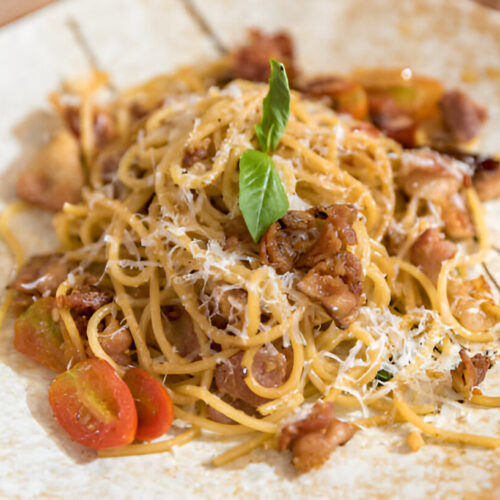
pasta carbonara
Equipment
- 1 large pot
- 1 skillet
- 1 mixing bowl
- 1 whisk
- 1 pasta strainer
- 1 grater
Ingredients
- 400 g spaghetti
- 150 g pancetta or guanciale, diced
- 3 large eggs
- 100 g Pecorino Romano cheese, grated
- to taste salt
- to taste freshly ground black pepper
- fresh parsley, chopped Optional, for garnish
Instructions
- Bring a large pot of salted water to a boil. Cook the spaghetti according to package instructions until al dente. Reserve about 1 cup of pasta water before draining the pasta.
- While the pasta is cooking, dice the pancetta or guanciale and add it to a skillet over medium heat. Cook until crispy, about 5-7 minutes. Remove from heat.
- In a mixing bowl, whisk together the eggs and grated Pecorino Romano cheese until well combined. Season with salt and freshly ground black pepper.
- Once the pasta is drained, return it to the pot over low heat. Quickly pour the egg and cheese mixture over the hot pasta, tossing vigorously to combine. If the sauce is too thick, add a little reserved pasta water to reach the desired consistency.
- Incorporate the crispy pancetta and any rendered fat into the pasta, tossing to combine everything well.
- Serve immediately, garnished with additional grated cheese, freshly ground black pepper, and optional chopped parsley.




